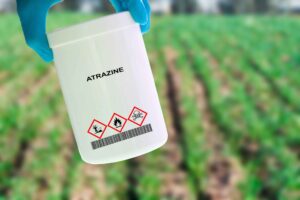The world children grow up in today is vastly different from the world of their parents. Social media platforms come and go, and trends change. Today many teenagers use Snapchat. Unfortunately, so do many adults with unscrupulous agendas. Some of these users sell fentanyl-laced drugs to unsuspecting teens via Snapchat.
Teenagers, Drugs, and Mortality Rates
To best understand the Snapchat fentanyl lawsuit, it is essential to understand the state of teens, drug use, and the associated fatality rates today.
A recent research letter published in JAMA Network examined trends among American youth and drug fatalities between January 2010 and June 2021. Over the past decade, the illegal drug trade has become increasingly saturated with illegally manufactured fentanyl pills and other synthetic opioids.
The researchers found that the rate of drug usage remained relatively stable among adolescents between 2010 and 2020 and dropped dramatically in 2021, perhaps due to the coronavirus pandemic:
Illegal drug usage within the previous year, as reported by 10th graders:
- In 2010: 30.2%
- In 2020: 30.4%
- In 2021: 18.7%
Despite the relative stability followed by a sudden decrease in illegal drug usage in 2021, overdose deaths increased. The researchers calculated drug overdose deaths for adolescents between 14 and 18 years old between January 2010 and June 2021.
Their results showed an increase in overdose fatalities:
- In 2010: 2.40 adolescent deaths per 100,000
- In 2020: 4.57 adolescent deaths per 100,000
- In 2021: 5.49 adolescent deaths per 100,000
Overdose mortality rates increased by more than 94% between 2019 and 2020. Between 2020 and 2021, that figure increased by another 20%. When the researchers compared data on fentanyl-involved fatalities, it corresponded with the rest of their findings.
They found a significant increase in fentanyl-related overdose fatalities:
- In 2019, 1.21 adolescent deaths per 100,000
- In 2020, 3.26 adolescent deaths per 100,000
- In 2021, 4.23 adolescent deaths per 100,000
In 2021, fentanyl was involved in more than 77% of all adolescent overdose fatalities.
Fentanyl can be 50 times stronger than heroin, significantly contributing to U.S. overdose deaths. There are two types of fentanyl. Medical fentanyl is produced by reputable pharmaceutical companies and prescribed by doctors. Illicit fentanyl is manufactured on the black market.
Most fentanyl-involved overdoses are linked to illicit fentanyl, which is distributed through illegal drug markets and sometimes added to other drugs to increase the base drug’s effectiveness and addictiveness. Unfortunately, illicit fentanyl also makes the base drug more dangerous. This is especially true if the drug user is unaware their drug has been laced with fentanyl, as even small doses of fentanyl can be fatal.
This suggests that many teenagers who overdose on fentanyl never knew or intended to take the drug. However, their drug dealer may have sold them Xanax or Percocet laced with illicit fentanyl. In too many unfortunate cases, this can become fatal.
Snapchat, Young People, and Drugs
Snapchat is incredibly popular among teenagers. U.S. teenagers reported they used the following social media platforms in 2022:
- Youtube, 95%
- TikTok, 67%
- Instagram, 62%
- Snapchat, 59%
- Facebook, 32%
- Twitter, 23%
- Whatsapp, 17%
- Reddit, 14%
- Tumblr, 5%
While you can use many social media platforms to buy and sell illicit drugs, Snapchat has proven to be particularly appropriate. According to the U.S. Drug Enforcement Administration (DEA), drug dealers use Snapchat to advertise through disappearing stories and posts. Sometimes these posts include code words or emojis to help evade law enforcement detection.
This unique feature makes Snapchat an ideal platform for buying and selling drugs. Snapchat users can send “snaps” to each other that disappear immediately upon viewing. These disappearing messages help users evade parental supervision and police detection of criminal evidence.
Snaps are designed to disappear in the following ways:
- Immediately upon viewing
- Within 24 hours of posting
- Immediately upon manual deletion
Once you manually delete a Snap, Snapchat marks the message to delete it from Snapchat’s servers.
Snapchat can create a false sense of security for those buying and selling illicit drugs on the social media platform. Snapchat can also help young buyers connect with drug dealers they would never associate with in their everyday life.
Are Drugs Prevalent on Snapchat?
Drugs are enough of a problem on Snapchat for the FBI to examine the social media company’s role in multiple fentanyl-related deaths. There are several fentanyl-linked fatalities where the victim arranged the drug purchase on Snapchat.
In a Vice “Hey, You Around?” interview, a college drug dealer explains why Snapchat is his preferred platform for selling illegal drugs. He claims to send frequent customers a Snapchat of his new stock. He sends pictures or videos of his illicit products so they can see what he has available. Many of his clients also initiate purchases over Snapchat.
In a recent statement, Snap, the parent company of Snapchat, told Forbes that the social media company is “committed to doing our part to fight the national fentanyl poisoning crisis.” In 2022, Snapchat found and removed 270,810 drug-related pieces of content that violated the company’s policies. These drug-related violations accounted for nearly five percent of Snapchats total violations.
Snap claims the company has been working to eliminate Snapchat’s illegal drug trade for a few years. Part of this effort has been to block results for drug-related search terms. Instead, the app redirects drug-seekers to resources about fentanyl’s dangers. Snap claims to work alongside DEA agents to help identify drug-related content on its platform. A Snap spokesperson said drug-related reports from its users fell from approximately 23% in September 2021 to roughly 3% in December 2022.
Still, the families of teens who died from fentanyl overdoses claim Snapchat “encouraged, enabled, and facilitated” the sale of the fentanyl-laced pills.
Teen Deaths Linked to Snapchat and Fentanyl
The new lawsuit was filed in Los Angeles Superior Court in early January against Snap, Inc., the parent company of Snapchat. The suit is joined by the families of eight young victims aged 15 to 22.
- Ava Sorenson, 17: Ava’s mother found her daughter after she did not turn off her morning alarm. She was in bed with foam coming from her mouth.
- Michael Stabile, 15: Michael accidentally overdosed at his parents’ home. He took fentanyl-laced pills.
- Ciara Gilliam, 22: Ciara died in August 2022 after taking a pill laced with fentanyl that she thought was Xanax.
- Emily Taylor, 17: Medical professionals put Emily on life support after she took a pill laced with fentanyl on March 3, 2021. She died two days later.
- Max Osterman, 18: Just before his 19th birthday, Max messaged a dealer he connected with on Snapchat. He requested Percocet but received a pill laced with fentanyl.
- Manuel “Manny” Navarro, 17: Manny had surgery on his collar bone after a skateboarding injury. He used Snapchat to connect with a dealer for pain medicine. He died after receiving a pill laced with fentanyl.
- Cody Mehlos, 21: Cody’s mother found him dead on January 2, 2021, after taking a fentanyl-laced pill.
- Finale Jaeger, 18: Finale had knee surgery to treat a gymnastics injury. A doctor prescribed her pain medication, but it wasn’t enough. She bought fentanyl from a peer via Snapchat to help with the pain and overdosed.
Snapchat Liability: Lemmon v. Snap, Inc.
In 2021, the Ninth Circuit made an interesting ruling on a lawsuit involving Snapchat. In Lemmon v. Snap, Inc., the court ruled that social media companies can be liable for their platforms’ dangerous features when these features essentially render the app defective.
In Lemmon v. Snap, Inc., three young Snapchat users accelerated their car, reaching up to 123 miles per hour while using Snapchat’s “Speed Filter” to record their speed. Minutes after using the Speed Filter, the boys crashed into a tree while traveling 113 miles per hour, killing all three.
Many Snapchat users think there may be an incentive for capturing a 100-mile-per-hour speed using the filter. Critics of Snapchat’s Speed Filter claim the feature encouraged reckless driving and should have been eliminated years earlier. The parents claim that Snapchat should have known that the filter incentivized its users to drive at dangerous speeds.
The parents of the deceased young men filed a negligent design lawsuit. As expected, Snap, Inc. asked the court to dismiss the case stating that the parents failed to lodge a realistic negligence claim and that the Communications Decency Act provided Snap, Inc. with immunity from liability.
Communications Decency Act: Third-Party Liability
The district court had previously ruled that Snap, Inc. enjoyed the immunity provided by section 230 of the Communications Decency Act (CDA). However, upon appeal, the court found that this ruling was incorrect and Snap, Inc. was not immune from liability in the negligent design lawsuit.
Often, lawsuits against social media companies fail because they attempt to hold social media companies responsible due to third-party liability. Plaintiffs attempt to hold companies such as Snapchat responsible for third-party content, such as the Speed Filter, in Lemmon v. Snap, Inc. However, Section 230 of the CDA often protects social media companies from these lawsuits.
Section 230 of the Communications Decency Act
When the internet was new, Congress wanted to protect a free and open internet. Section 230 of the CDA was passed in 1996 when 40 million people around the globe were using the internet. Section 230 protects freedom of speech by shielding the intermediary providers of computer services.
Section 230 states that no interactive computer service user or provider will be treated as the speaker or publisher of any data provided by another data content provider. This means that each internet user is responsible for their own words online and not for other people’s statements. The creators of harmful speech should be held accountable, not the service provider hosting the speech.
At the time, Congress believed that promoting user speech online outweighed the repercussions. It was also practical. The sheer volume of users on the internet would make it impossible for new internet services to police each user’s speech.
Section 230 and Lemmon v. Snap, Inc.
In a unique twist, the parents in Lemmon v. Snap, Inc. argued that the Snapchat product was defective. They did not attempt to hold Snap, Inc. liable for its conduct as a speaker or publisher under Section 230.
Instead, they chose to treat Snap Inc. as a product manufacturer. As such, the company has a duty to design a reasonably safe product independently of its role in monitoring third-party content, such as that associated with the Speed Filter.
To determine whether Section 230 is relevant, the Ninth Circuit applies a three-prong test from Barnes v. Yahoo!, Inc. The defendant only enjoys Section 230 immunity if the following three-prong test is satisfied:
(1) A user or provider of an interactive computer service (2) whom a plaintiff seeks to treat under law as a publisher or speaker (3) of data provided by another data content provider.
The Ninth Circuit Court of Appeals found that Snap, Inc. failed this test for two reasons. First, Snap, Inc.’s duty to design a reasonably safe product was independent of their role in monitoring third-party content. Second, the negligent design claim did not hinge on information from a third-party content provider.
How Lemmon v. Snap, Inc. May Impact the Snapchat Drug Overdose Lawsuits
Lemmon v. Snap, Inc. opened the door for social media companies to be held liable for their products as product manufacturers. If you can prove that the social media product is not reasonably safe, the company has failed its duty to you as the consumer.
The parents’ attorneys in the upcoming Snapchat fentanyl death lawsuit may use this angle to hold Snapchat responsible for their loved ones’ deaths. Indeed, the court could rule that Snapchat’s unique feature of auto-deleting messages excludes it from being a reasonably safe product.
Holding Snapchat Responsible for Your Teen’s Death
If your child overdosed by taking fentanyl-laced drugs purchased using Snapchat, you are not alone. A social media lawyer can help you seek justice. Contact the personal injury attorneys at Morris and Dewett.









